3.2 - models, AD, SRAS, LRAS, deflationary and inflationary gaps
1/27
There's no tags or description
Looks like no tags are added yet.
Name | Mastery | Learn | Test | Matching | Spaced |
|---|
No study sessions yet.
28 Terms
aggregate demand AD
total demand for goods and services in an economy at a given average price level and in a given time period
AD = C + I + G + (X-M)
AD ↑ = economic growth
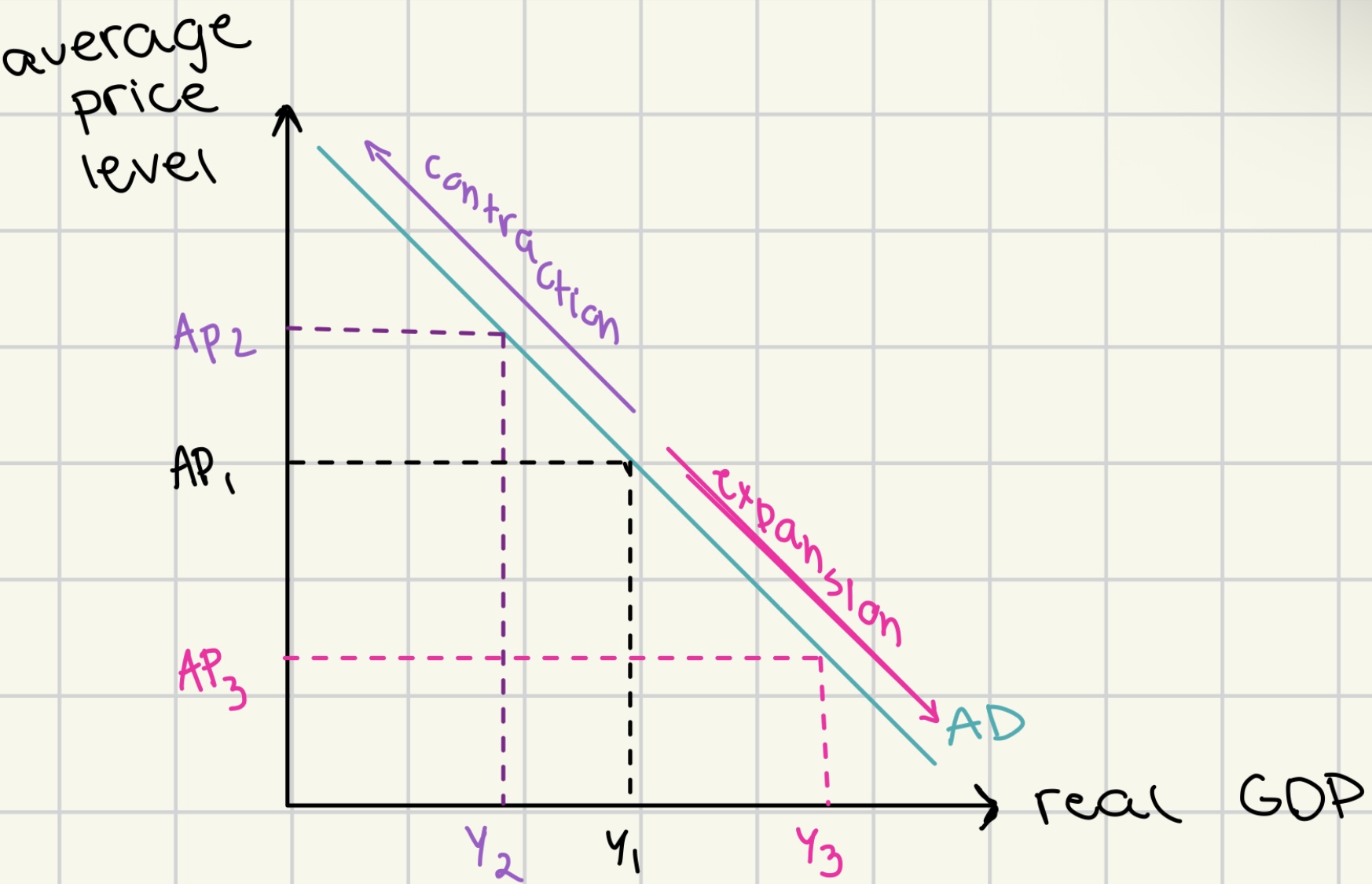
AD curve shifts
right shift → increase of any determinants of AD
left shift → decrease of any determinants of AD
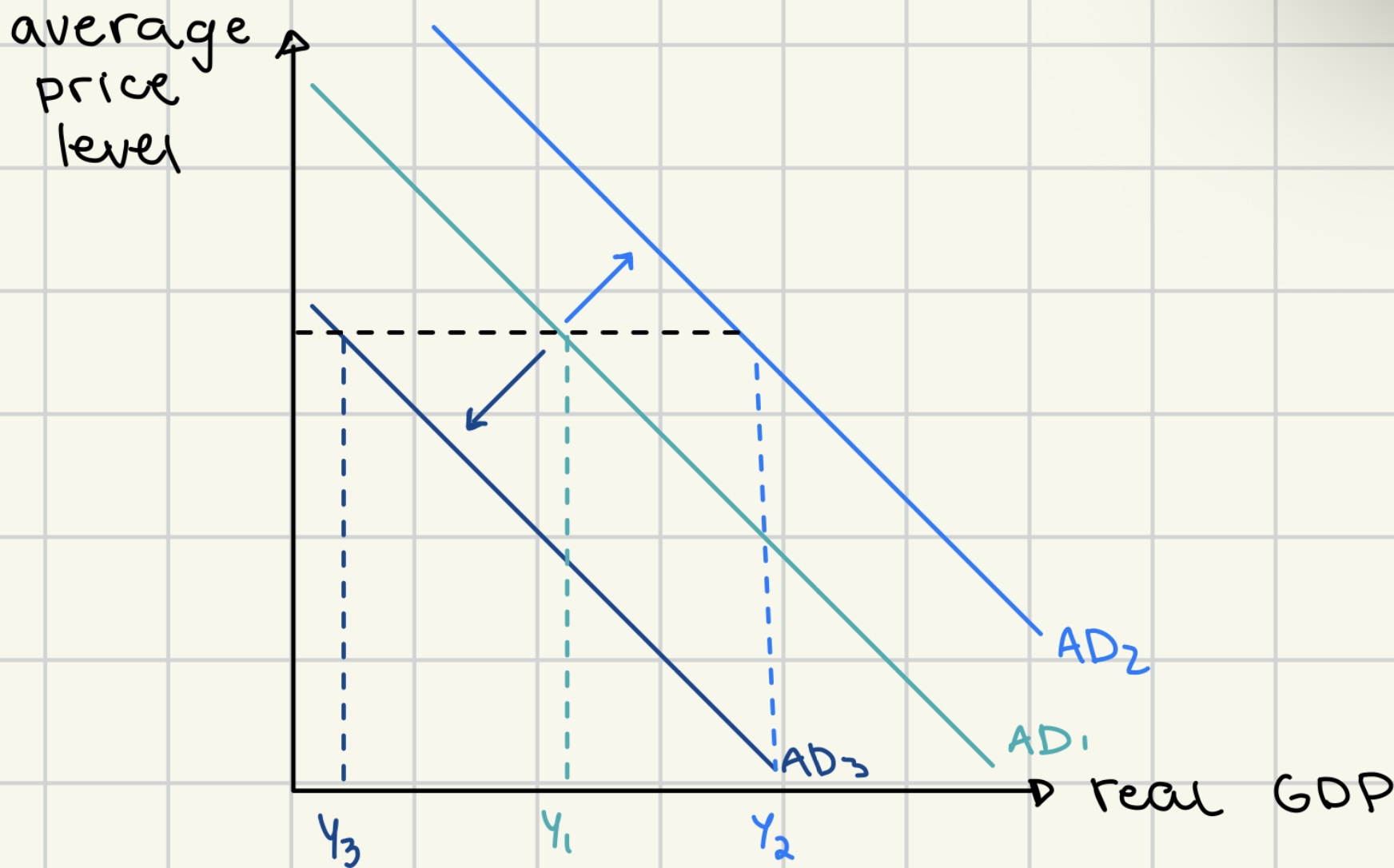
factors influencing consumption of AD
consumer confidence ↑ = c↑
interest rates↑ = c↓
wealth ↑= c↑
income tax ↑= c↓
level of household indebtedness ↑ = c↓
factors influencing investment of AD
business confidence ↑= i ↑
interest rates ↑ = i ↓
technology ↑= i↑
business taxes ↑= i↓
level of corporate indebtedness↑ = i ↓
factors influencing government spending of AD
political priorities
economic priorities
factors influencing net exports of AD
income of trading partners ↑= x ↑
exchange rates (domestic currency↑ = m↑ / x↓
trade policies↑ = m ↓
short- run aggregate supply SRAS
total supply of goods/services produced within an economy at an average price level at a given time
wages and other factors are inflexible
only shifted by change in costs of
raw materials
energy
indirect taxes
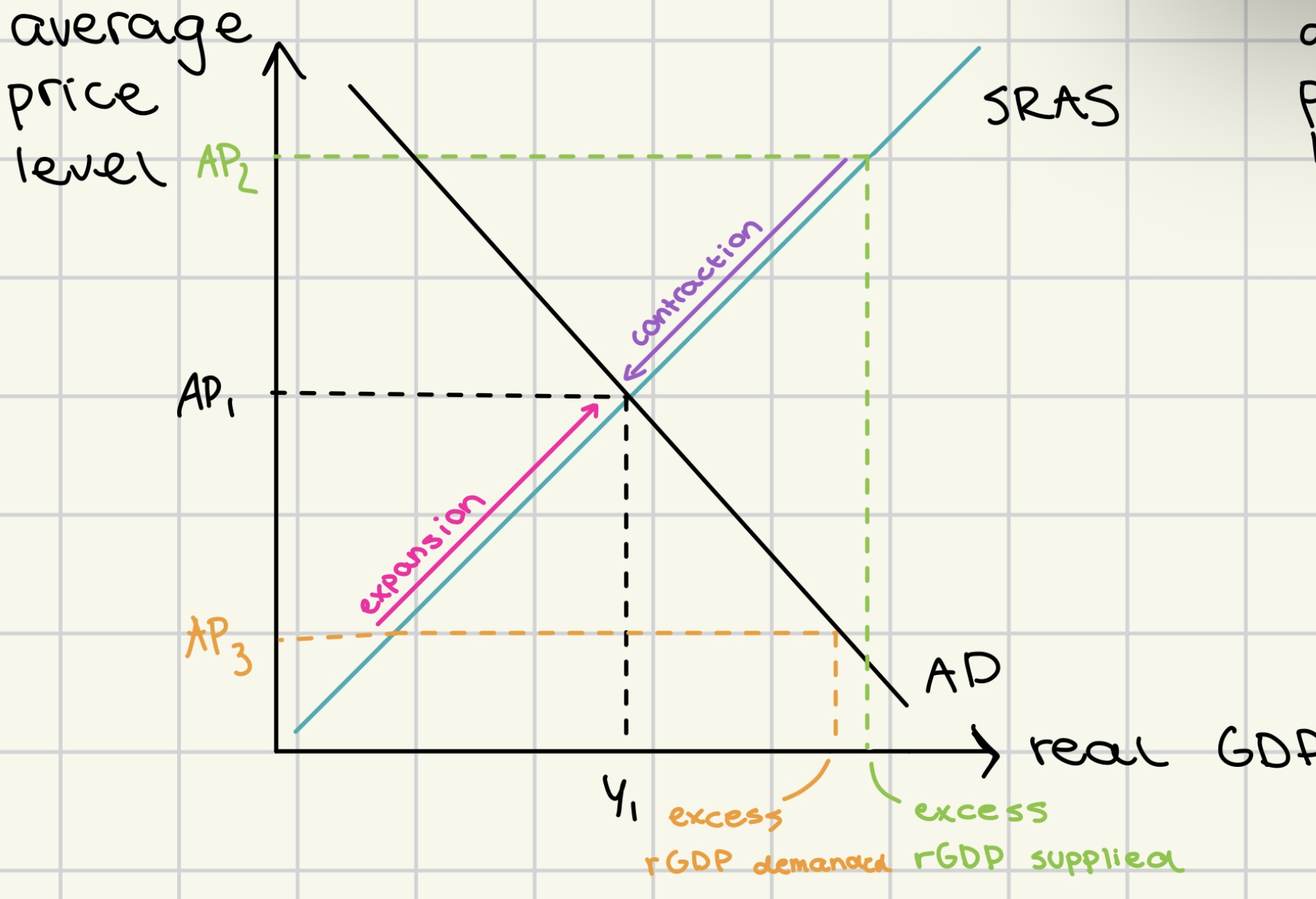
SRAS curve shifts
left shift → increase in costs/ decrease in SRAS
right shift → decrease in costs/ increase in SRAS
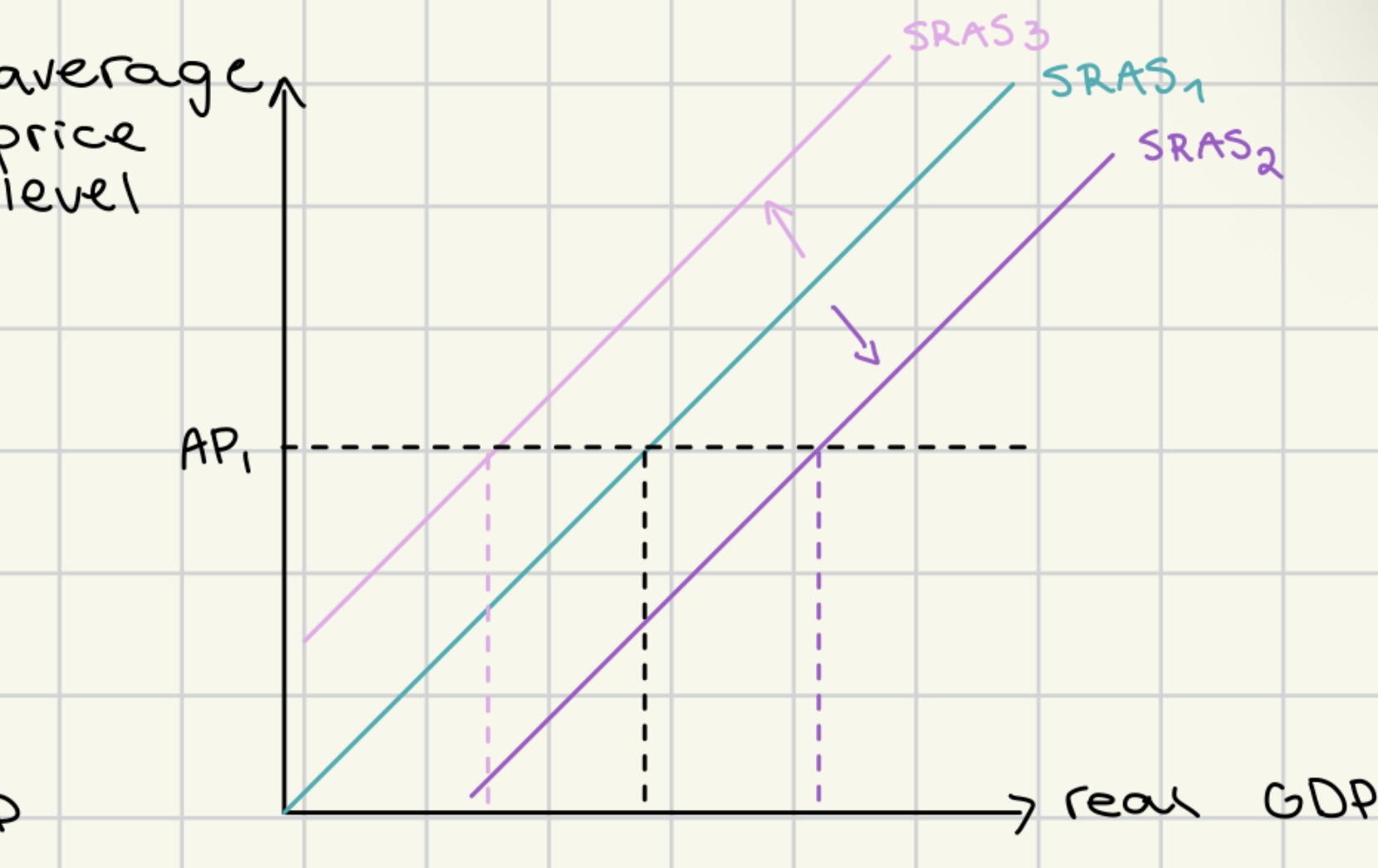
factors shifting SRAS curve
input costs (wages, costs of resources) ↑ = SRAS ↓ = left
indirect taxes ↓ = costs ↓= SRAS ↑ = right
subsidies ↑ = costs ↓ = SRAS ↑ = right
supply shocks = output ↓ = SRAS ↓ = left
impacts of changes of SRAS and AD on short run equilibrium
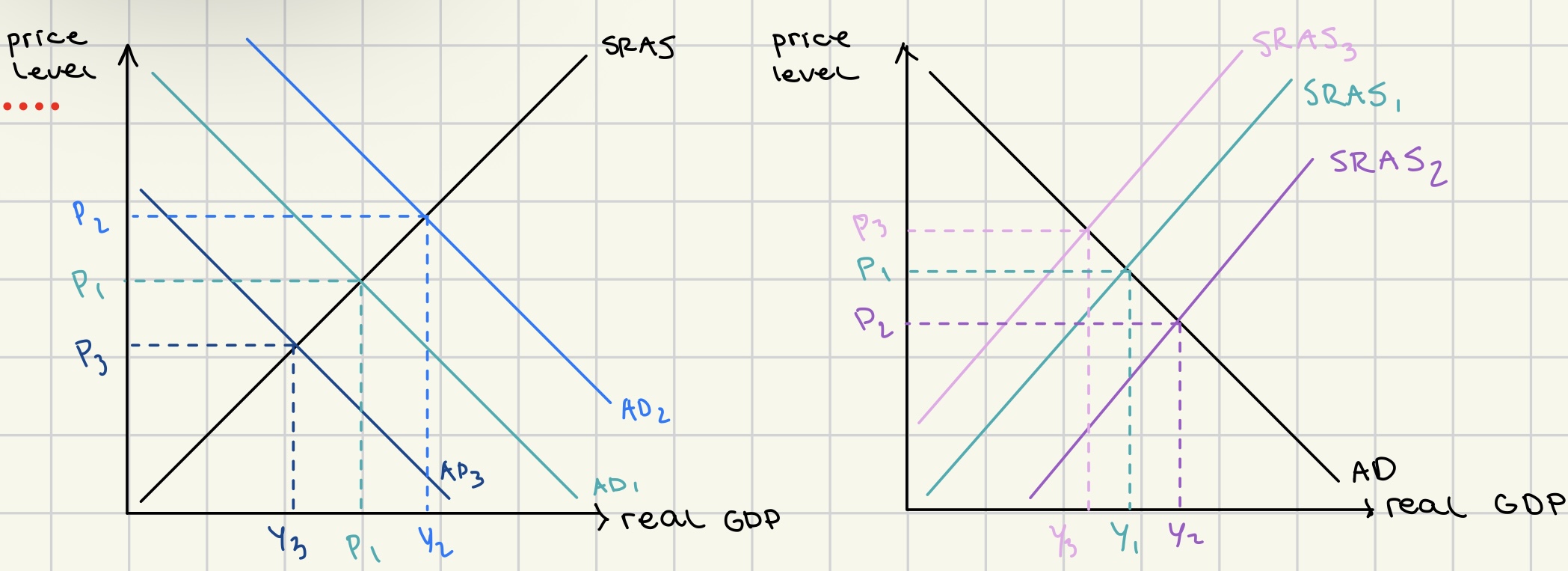
long run aggregate supply LRAS (monetarist view)
all factors of production are utilized efficiently.
negative and positive output gaps will self-correct
only average price level will change
economy will always return to this full employment in long run
deflationary gap → fall in AD
real GDP < potential GDP
unemployment> natural rate of unemployment
not enough demand in the economy to make it worthwhile produce potential GDP
caused by decrease (left shift) in AD
decreased price level
decreased real GDP
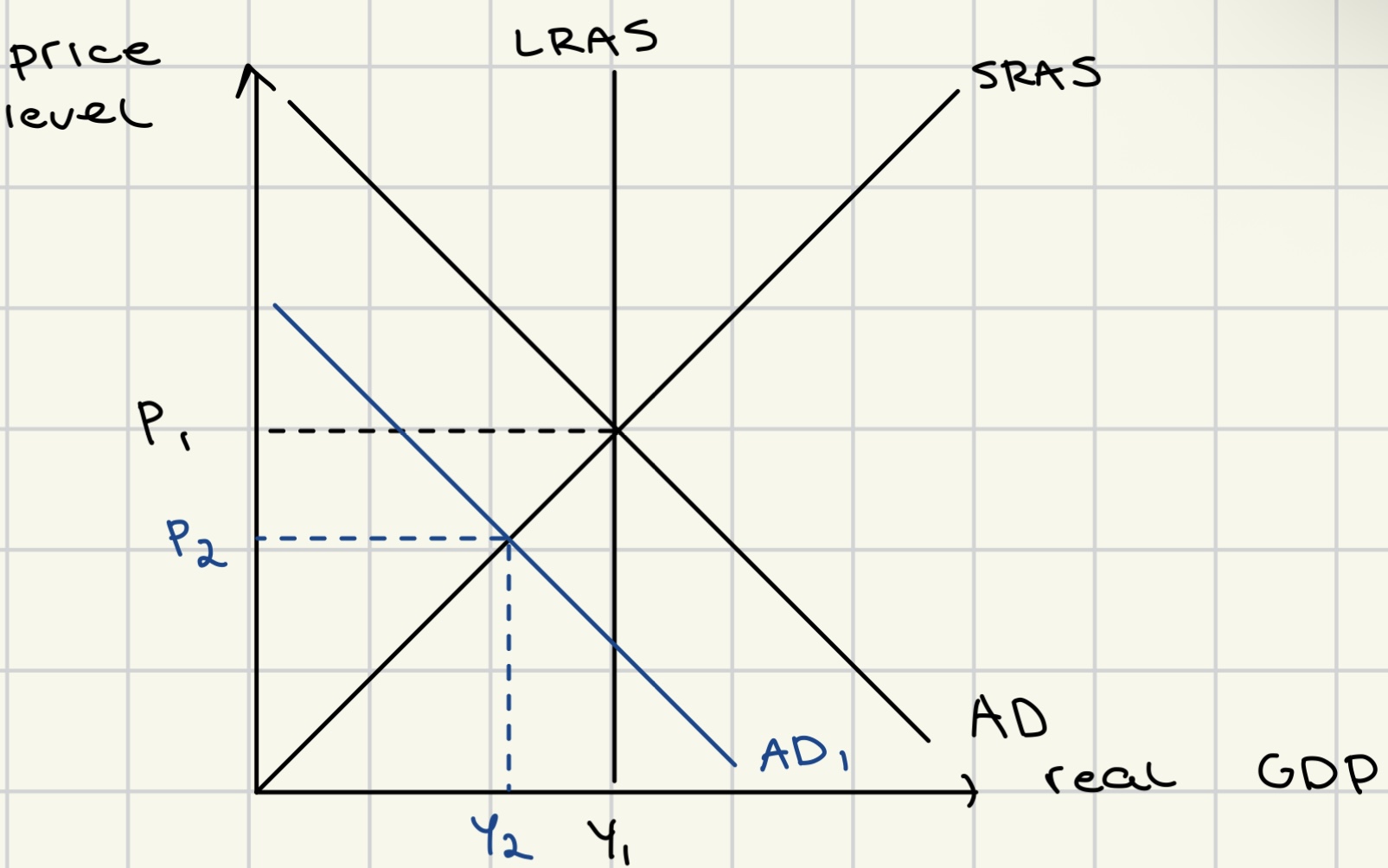
solving deflationary gap → rise in SRAS
real GDP > potential GDP
unemployment < natural rate of unemployment
caused by increase (right shift) in SRAS
decreased price level
increased real GDP
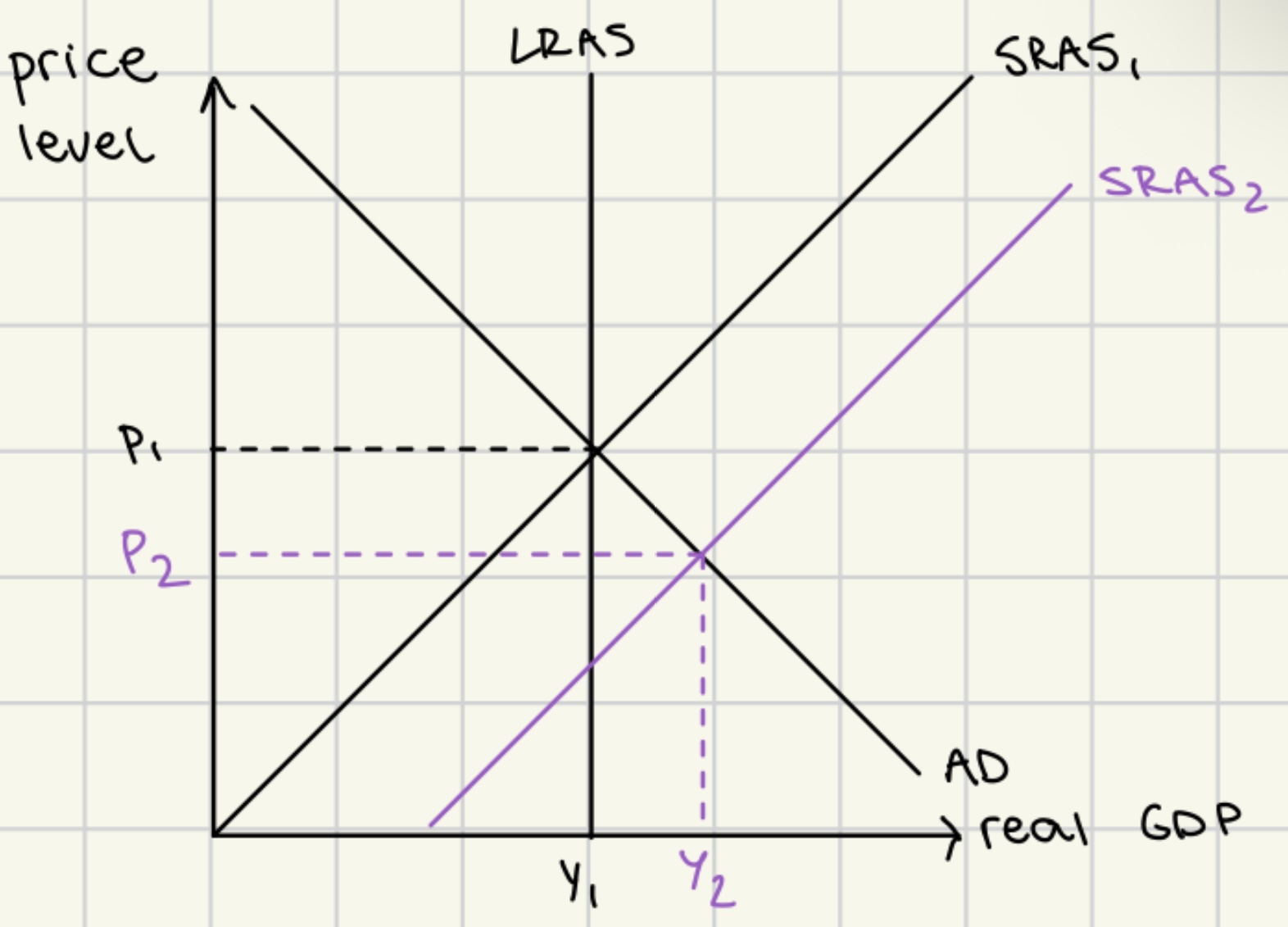
inflationary gap → rise in AD
real GDP > potential GDP
unemployment < natural rate of unemployment
to too much demand in the economy
caused by increase (right shift) in AD
higher price level
higher real GDP
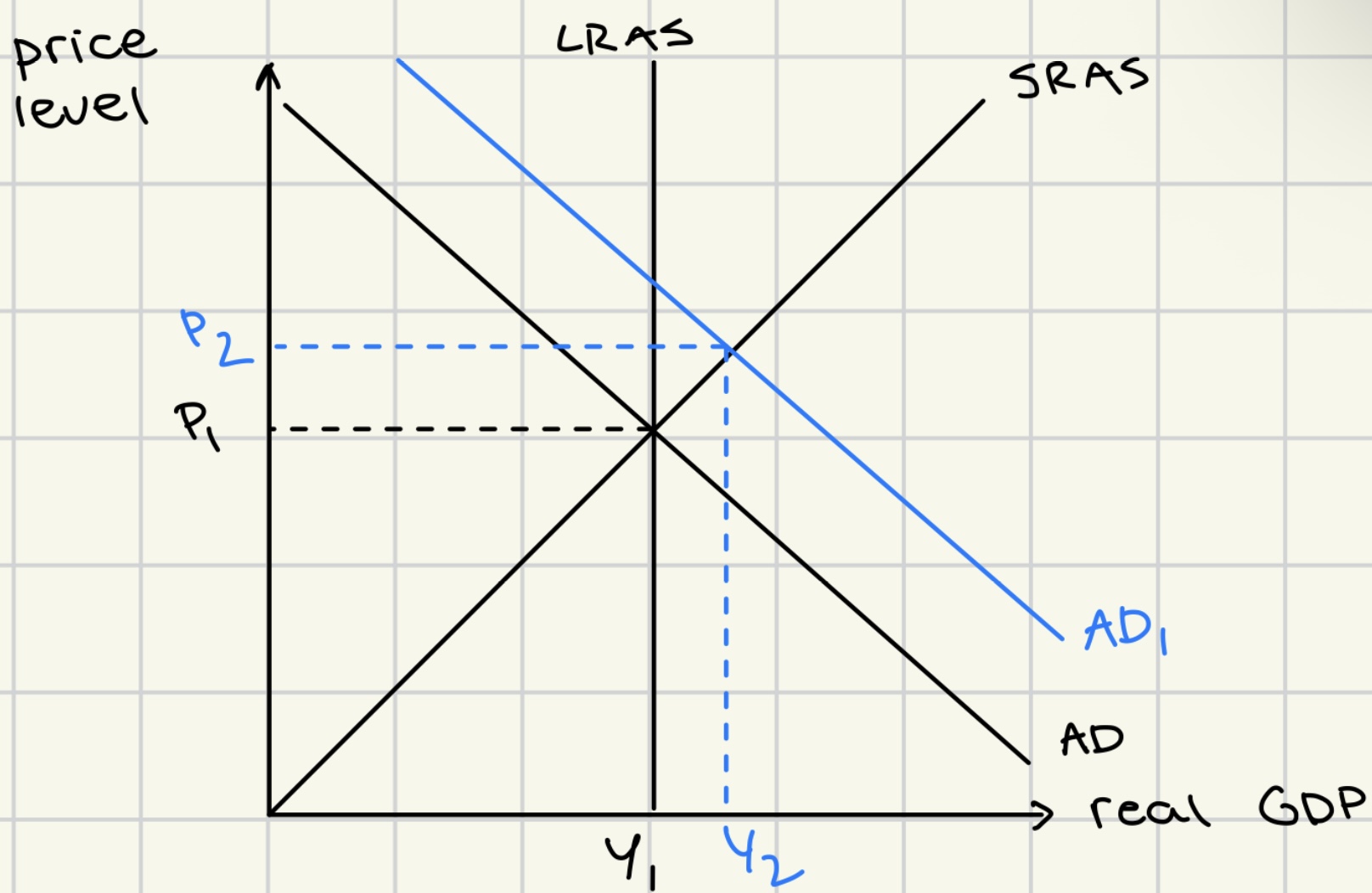
solving inflationary gap → fall in SRAS
real GDP < potential GDP
unemployment > natural rate of unemployment
caused by decrease (left shift) in SRAS
stagflation
increased price level
decrease in real GDP
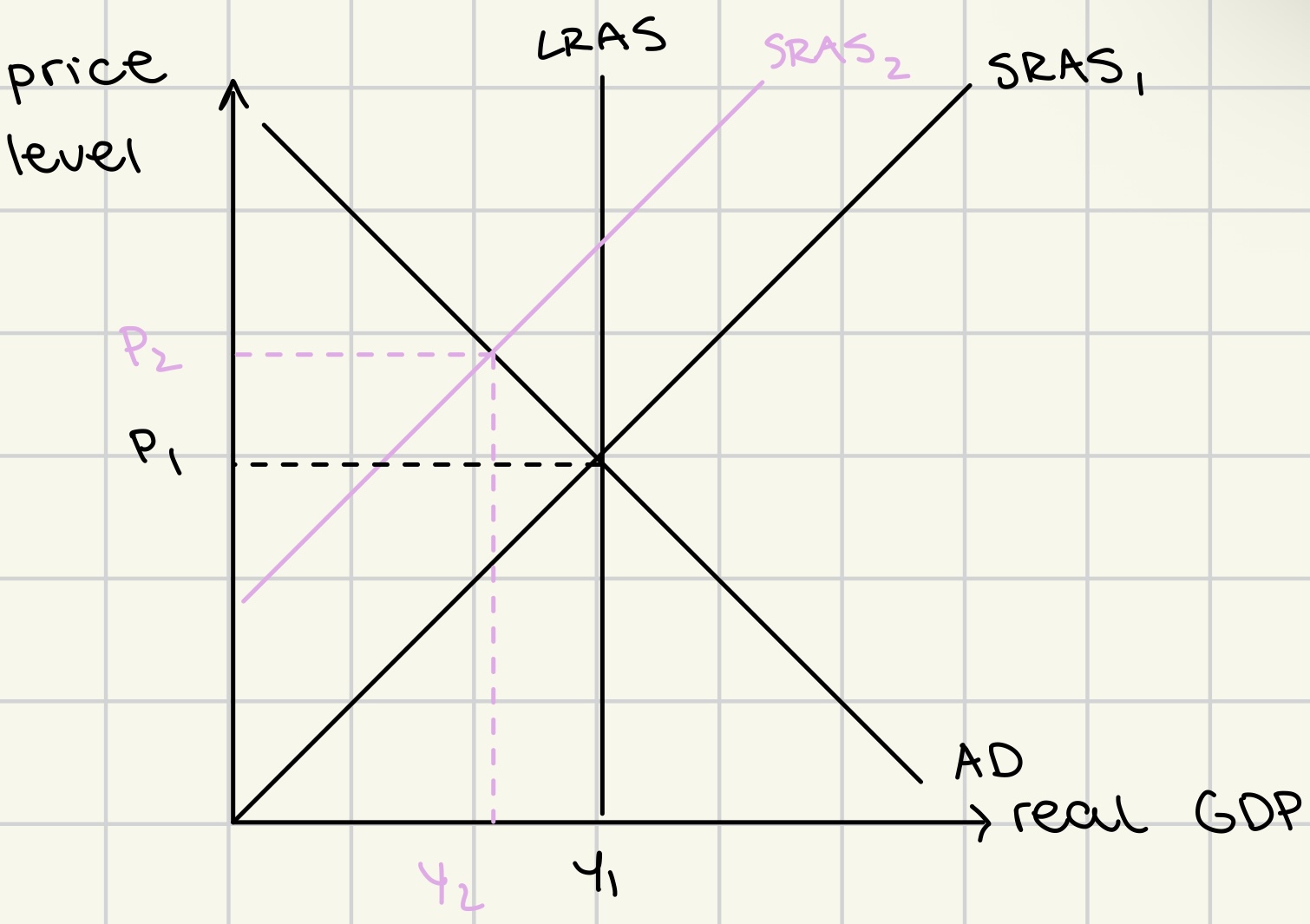
deflationary gap creation + correction & result
creation:
fall (left shift) in AD
decreased price level
decreased real GDP
deflationary gap
correction:
increase (right shift) in SRAS
decrease in production costs
good supply shock
result:
economy is back at LRAS curve at point *
fall in price level
assumptions:
wage and price flexibility in the long run
allowed economy to shift back to full employment of output
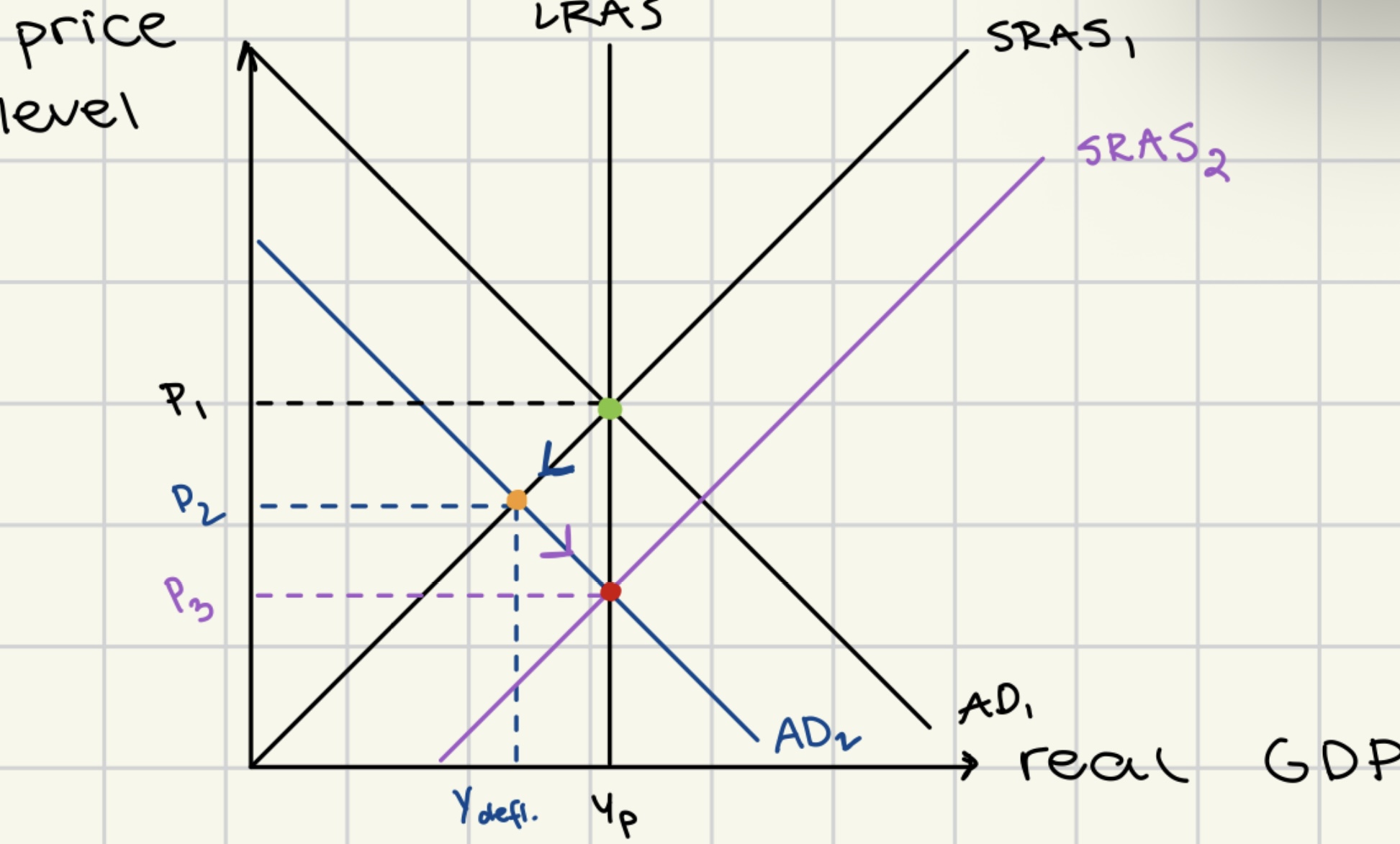
inflationary gap creation + correction & results
creation:
rise (right shift) in AD
increased price level
increased real GDP
inflationary gap
correction:
decrease (left shift) in SRAS
increase in production costs
bad supply shock
result:
economy is back at LRAS curve at point *
rise in price level
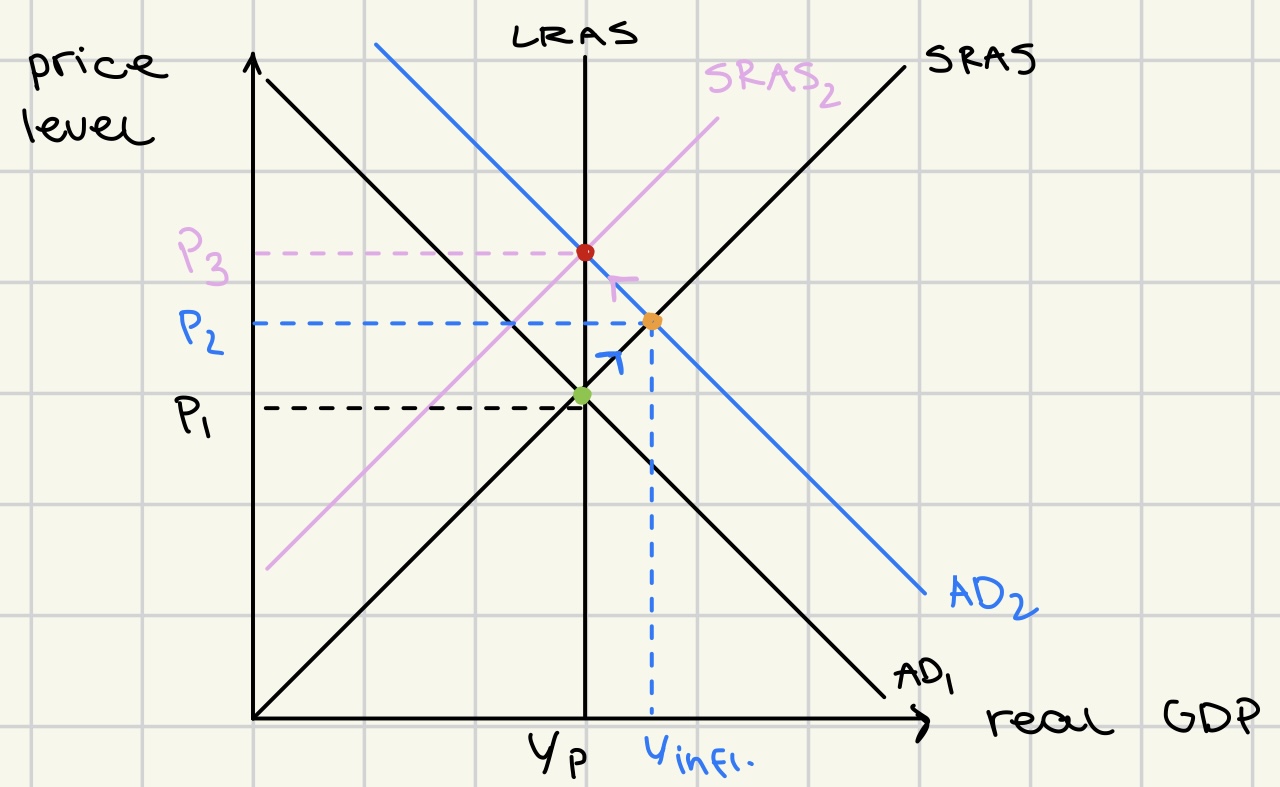
Keynesian model
LRAS is L shaped with 3 distinct sections
elastic supply section
relatively elastic supply section
perfectly inelastic supply section
will not always self-correct
may get stuck below potential GDP
needs government intervention to aid it
increase in AD may not necessarily result in increase in price level
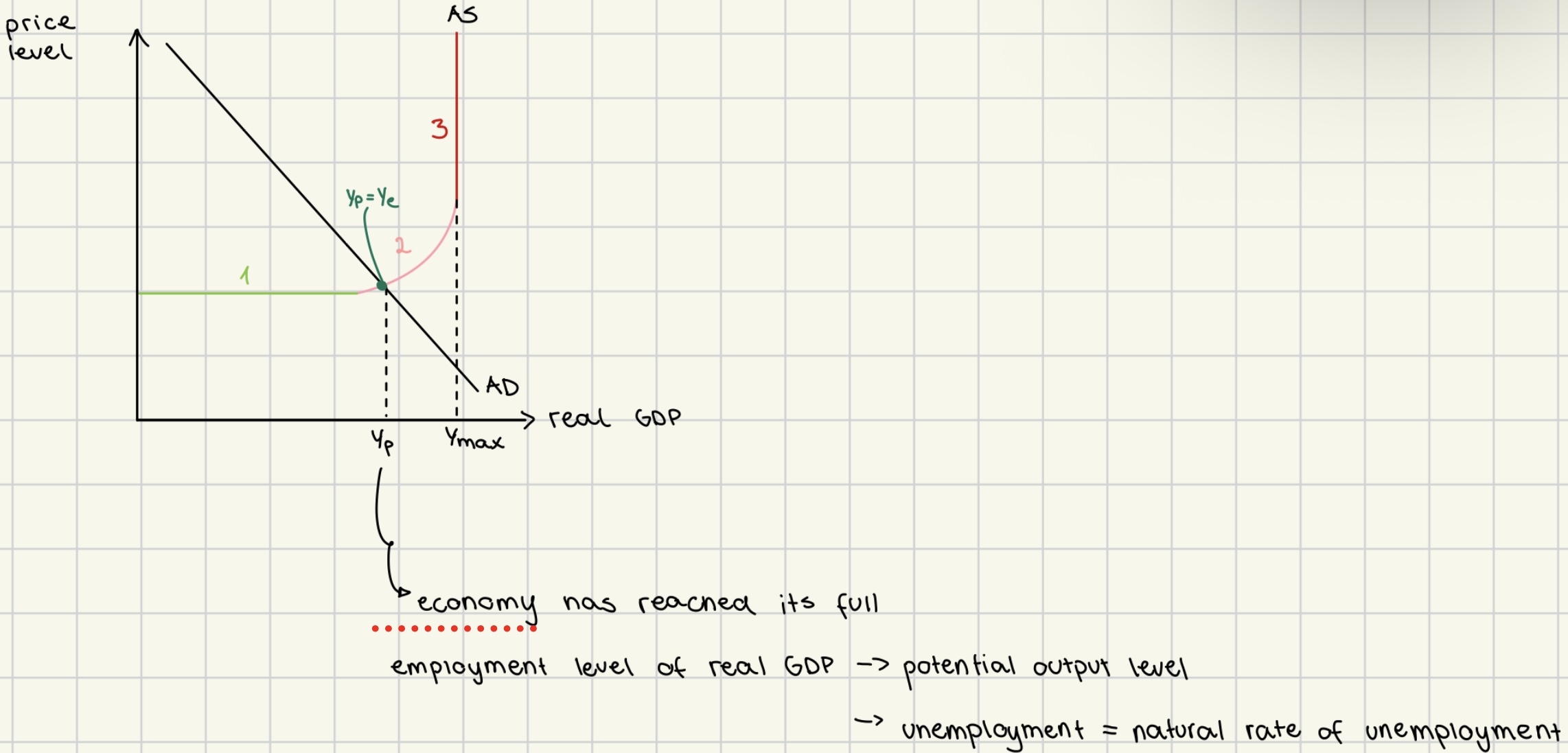
elastic supply section
unemployment of resources & spare capacity
easy to increase output without rising prices
relatively elastic supply section
spare capacity begins to run out
output (rGDP) increases
resources’ price increase
higher costs of production
increased selling prices
perfectly inelastic supply section
full employment of all available resources
real GDP can no longer increase
any effort to increase output results in higher price
deflationary gap Keynesian model
Ye < Yp
unemployment > natural rate of unemployment
AD is too weak to induce firms to produce at Yp
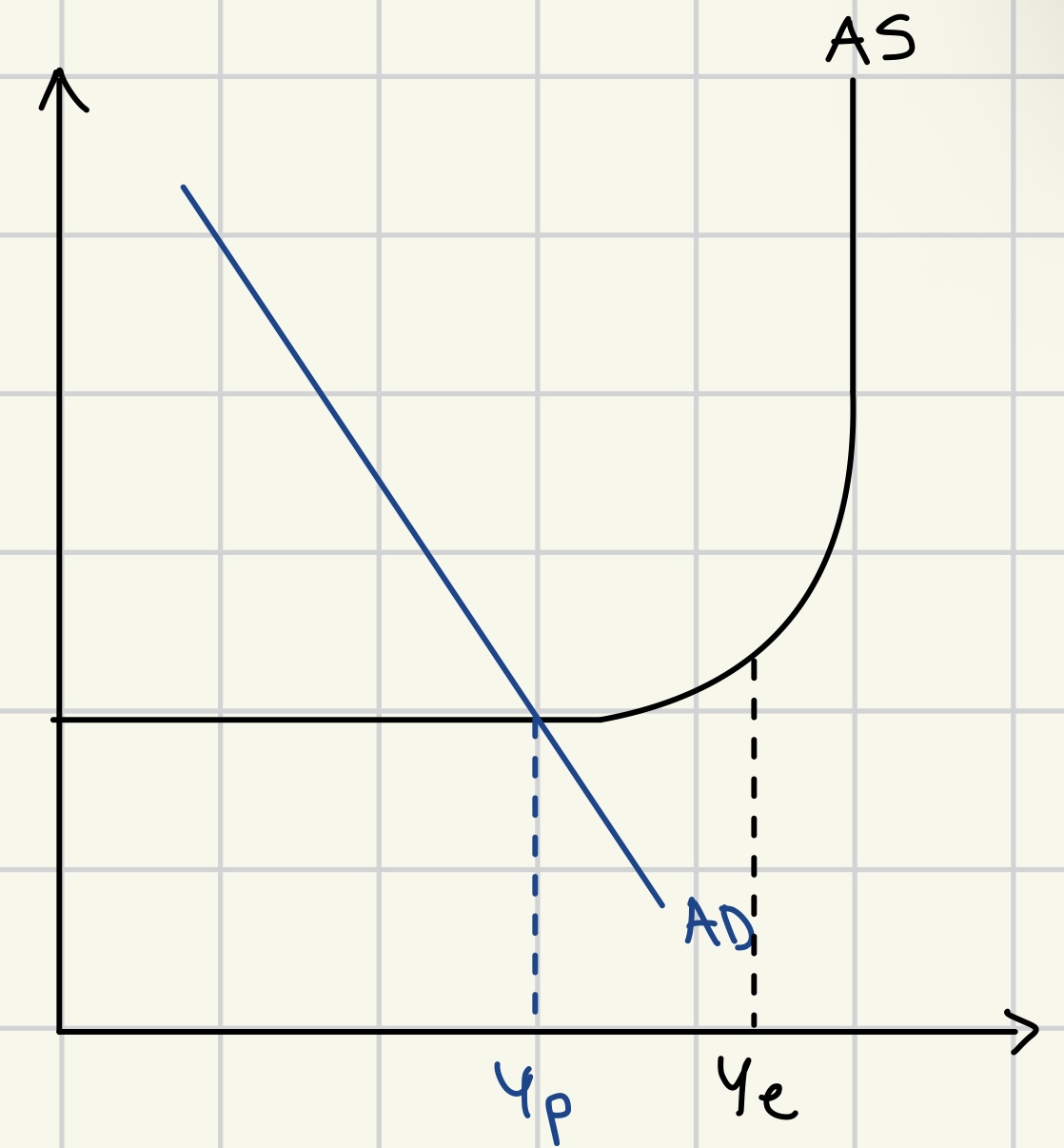
inflationary gap Keynesian model
Ye > Yp
unemployment < natural rate of unemployment
strong AD
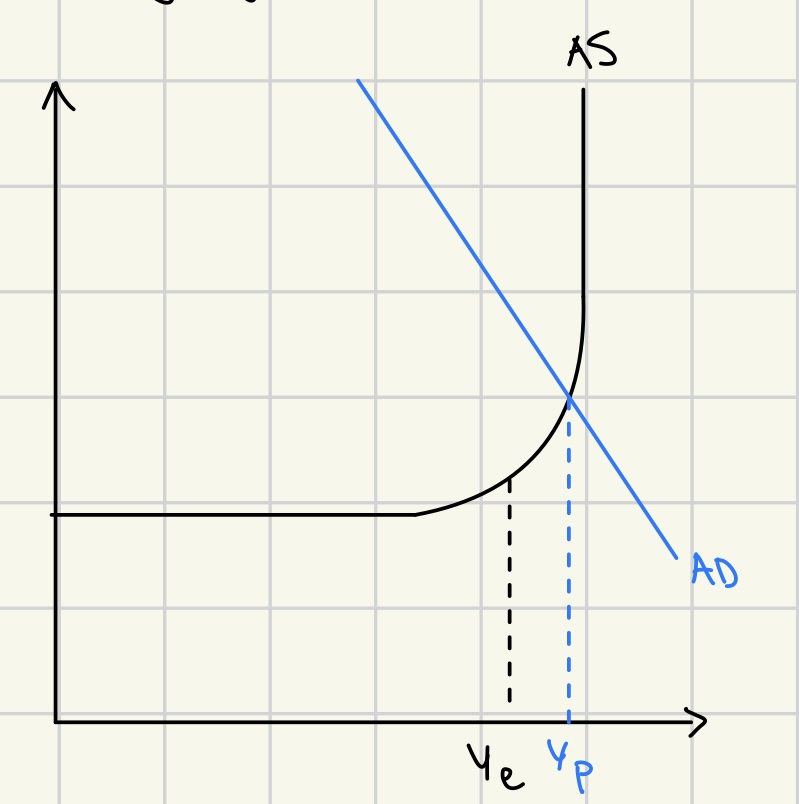
output gaps definition
the difference between
actual level of output (rGDP)
maximum potential level of output (Yp)
difficulty with measuring output gaps
hard to know the exact maximum productive potential
due to factors like
changes in technology
labor force participation
variations in consumer demand.
factors affecting AS and LRAS
(economic growth/fall & Yp increase/ fall)
changes in quality + quantity of:
land
labor
capital
enterprise

classical model
wages are flexible
natural rate of unemployment
gaps are automatically corrected
resources are free to change as price level changes
markets should work as freely as possible
AD changes result in change in price level
(demand side policies <supply side) are better in generating economic growth
Keynesian model
sticky prices
sticky wages
severe recessionary gaps
requires government intervention to stimulate demand and reduce unemployment.
gaps can persist over long time
increase/ decrease in AD don’t need to result in change of price level